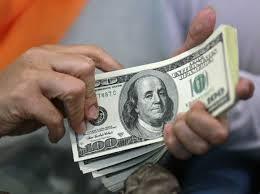FIIs hold as much as 27 per cent in the over $1.6 trillion Sensex market capitalisation as of the September quarter, which is at a historic high.
 Swiss brokerage Credit Suisse on Wednesday said the robust foreign inflows into the country's debt and equities markets will halve to $18-20 billion next year on a slowdown in the sovereign wealth funds' play.
Swiss brokerage Credit Suisse on Wednesday said the robust foreign inflows into the country's debt and equities markets will halve to $18-20 billion next year on a slowdown in the sovereign wealth funds' play.
"The foreign institutional investors inflows into the domestic markets will come down to $18-20 billion in the next 12 months, which is half of the current inflows," managing director for equity research Neelkanth Mishra told reporters in Mumbai.
He attributed this primarily to a possible slowdown in pumping in money by the SWFs.
SWFs are short on allocatable resources due to the fall in the crude oil prices, Mishra said.
FIIs hold as much as 27 per cent in the over $1.6 trillion Sensex market capitalisation as of the September quarter, which is at a historic high.
Currently, the inflows are almost evenly split between debt and equities, (as there is a $25 billion cap on FIIs' holdings in government bonds, though there is a huge demand for more) and Mishra pointed to his in-house research which said around 40-50 per cent of the inflows into domestic equities come from SWFs.
It can be noted that oil prices have slid to a five-year low of $66-67 to a barrel.
Since June, there has been a massive 35 per cent fall in the Indian basket of Brent crude. Many of the countries in the Middle East like the UAE and Oman have very active SWFs.
Even though the policy-makers sometimes blame such flows to be ‘fickle’, the FII inflows are important for funding the current account gap and reducing the overall deficit, which surged up to 2.1 per cent in the second quarter as against 1.2 per cent a year-ago.
Asked about flows from pension funds and insurance companies, Mishra acknowledged they are getting interested in domestic markets, saying they spend a lot of time in due diligence before taking an investment call.
They move slowly and there will not be a dramatic uptick in their interest over the span of a single year, he said.
Mishra said he expects returns of 30 per cent from the equity markets over the next two years or 15 per cent per annum growth, but did not give a target level for the indices.
It can be noted that the Sensex has been the second best performer YTD across the globe with a 35 per cent rally after the Shanghai index which jumped 47 per cent.
And many analysts are commenting that Chinese stocks, due to cheaper valuation may spoil the Sensex party next year.
Many foreign brokerages have given a very promising year for the Sensex with some of them seeing it at 33,000 at the end of December next.
Mishra said the gross domestic product growth will be handsome and the country will be one of the few pockets which will show good numbers, as the world is expected to struggle on the growth front.
He said he does not expect the Reserve Bank of India to deliver a rate cut before March, as inflation may go up in January and its Governor Raghuram Rajan wants to conclusively see a downward trend in the trajectory before he starts cutting the rates.










